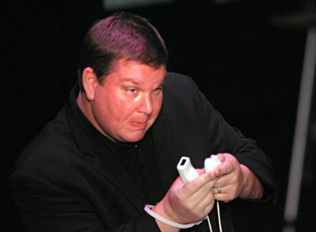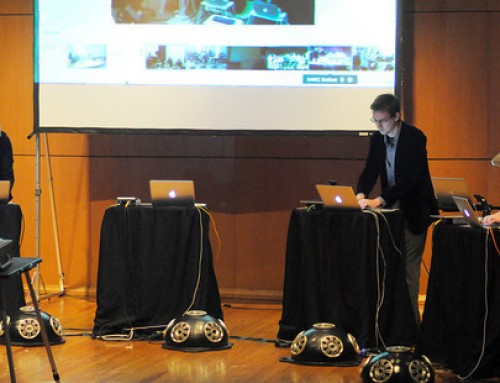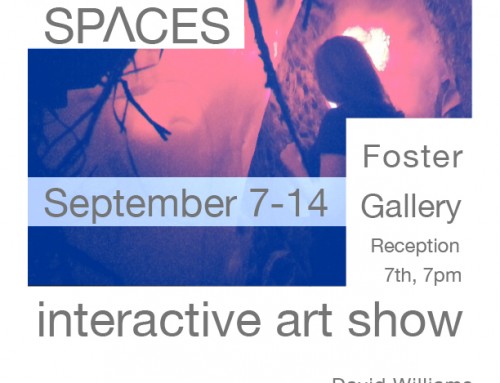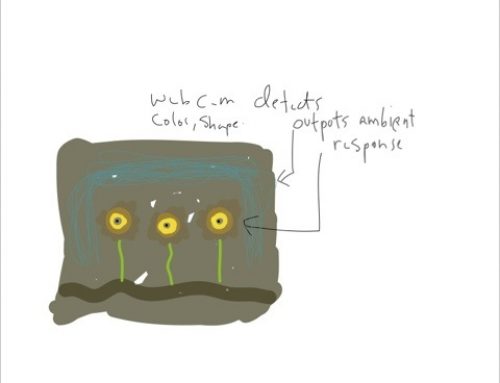Nick Hwang | WTFreq | Spring 2011
WTFreq is a piece for four wii-mote performers and four laptops. The piece is a followup to What the Bells, 2010. The piece uses demonstrative wii-mote moments to visually differentiate four types of sound synthesis. Automated instructions are displayed on each performers laptop display. The instructions include information on the ‘current gesture’ and the ‘upcoming gesture’. Each gesture instruction tells the performer which demonstrative ‘pose’ to use, a particular performance ‘gesture’ (like ‘create a melody’) which corresponds with the pose, and a duration for which to perform that musical performance ‘gesture’. For each instruction, a timer counts down, helping the performer know how long to perform the gesture as well as anticipate the up-coming gesture. Each ‘pose’ is a different way to hold the wii-mote and a different physical movement to ‘play’. Depending on the position of the performer (1-4), different instructions are given.
From an outdoor concert by the Laptop Orchestra of Louisiana.[Direct link to video: ]
Tags: WTFreq, What the Bells, wii-motes, laptop piece, Nick Hwang, performance, gestures
Compositional considerations in WTFreq:
1. Demonstrative performer actions One of the many plights to a laptop orchestra is the lack of intuitive physical movements relating to the resultant sound. [The trend of projected materials during laptop orchestra performance is merely a kludge, and not a solution, to overcoming the non-intuitive physical nature of a laptop instrument.] The use of wii-motes and the use of different ‘poses’ was important in creating a physical-gesture-to-sound-connection. The introduction of poses in the piece were given temporal emphasis and then often juxtaposed with a previously used pose to obviate the contrast in both actions and sound.
- Embedded instrumental flexibility
The wii-mote is a controller that allows different modes of operation: buttons, joystick, accelerometer, and infrared. The piece does not use the infrared, but uses the other three to control the pitch, loudness, and note length in each pose. Each pose is different way to hold and move. The resulting sound for each post is different as well. The performer can easily transition from one pose to another easily. As a whole, there are three different poses, and 4 types of sounds. -
Ensemble interaction
Another plight of laptop music, that commonly accompanies, is a face-in-laptop performance, where the interaction with audience with performers is minimal. Many instruments in WTFreq tell the performers to coordinate with one another, creating moments of down-the-line musical motion, simultaneous musical attacks, and improvisations between performers. The end result is engaged performers and an engaging performance.
Technical considerations:
1. Wii-Mote Syncing:
A timesaving solution for syncing several wii-motes was using a single off-stage computer to which the wii-motes were synced. The off-stage computer then distributes the wii-mote sensor data to the appropriate laptop.
- Automations:
The performers instructions are predetermined and changed based on time. Non-performers help control larger musical factors, like reverb and synthesis parameters (harmonicity and modulation index envelope shapes for FM synthesis).
The use of GRENDL to load and launch WTFreq and pre-syncing the wii-motes facilitates ease of performance and minimalizes setup time.









